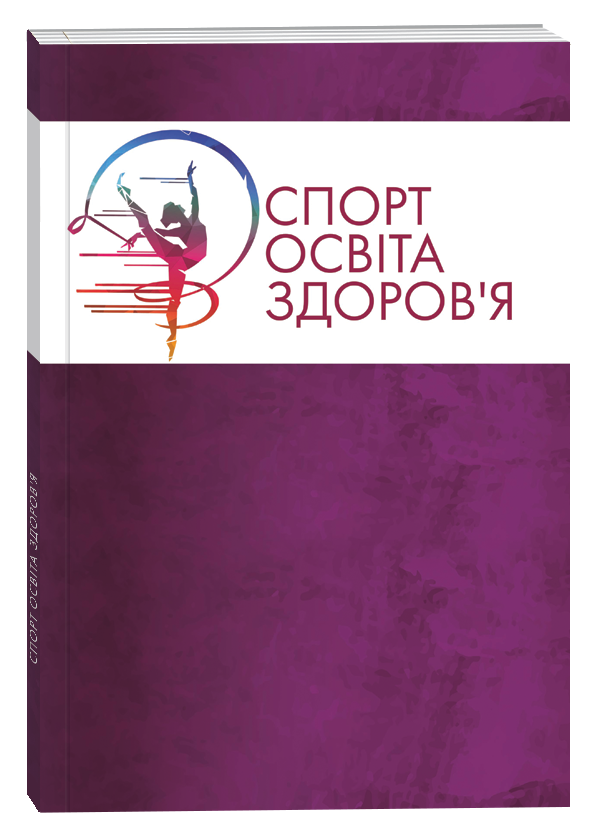DEVELOPMENT OF PHYSICAL EDUCATION IN CALIFORNIA (UNITED STATES OF AMERICA)
DOI:
https://doi.org/10.32782/sports-education/2025-2-3Keywords:
physical education, United States of America, California, history of development, legislation, content standardsAbstract
Introduction. The article substantiates the evolution of physical education in the USA, emphasizing its importance for the comprehensive development of youth. Particular attention is paid to the historical path of the formation of physical education, starting from the 19th century. The leading role of the state of California in the implementation of progressive approaches and standards in sports education is highlighted. The purpose of the study is to analyze key milestones in the history of the development of physical education in schools in California (United States of America). Material and methods. Analysis of literary sources, historical analysis, comparative method, documentary analysis. Results. As a result of the study of scientific literature and materials on the Internet, the history of physical education in the United States of America and California was traced. It was studied that physical education in the USA has a long history, spanning several centuries – from the sports movements initiated in the 19th century to modern educational initiatives of the 21st century. It is analyzed how physical education in California was formed and developed. Key aspects of the evolution of physical education in California are highlighted: early initiatives of informal organizations in the 19th century; institutionalization in the early 20th century; standardization in the mid-20th century; the key role of the California Interscholastic Federation (CIF); legislative consolidation of the mandatory nature of physical education in schools; development of educational standards for the content of physical education; leadership in the implementation of Title IX; developed educational management structure. Generalized structure of the California school system. Conclusions. The evolution of physical education in the United States of America is a reflection of the growing understanding of its key role in the comprehensive development of youth, starting from the emergence of sports clubs in the 19th century to the legislative consolidation of mandatory nature and the development of educational standards in the 21st century. The state of California occupies a special place in this process, demonstrating leadership positions in the field of sports education. Key aspects of the development of physical education in California are early informal initiatives, institutionalization, standardization, the activities of the California Interscholastic Federation (CIF), legislative support for mandatory education, the development of content standards, leadership in the implementation of Title IX, and a developed management structure. Thanks to these factors, California is one of the leading states in providing quality physical education, which makes its experience valuable for domestic practice.
References
1. Barney D.C., Pleban F.T., Wilkinson C. The evolution of physical education in the United States. Journal of Physical Education and Sports Management. 2016. № 3 (1). Р. 1–7.
2. Bell N.D., Lorenzi D. Promoting second language acquisition in elementary and secondary physical education. Journal of Physical Education, Recreation & Dance. 2004. № 75 (6). Р. 46–51. https://doi.org/10.1080/07303084.2004.10607258.
3. Burden J.W., Columna L., Hodge S.R., Martinez de la Vega P. Culturally and linguistically responsive pedagogy in physical education: Empowering English language learners. Quest. 2013. № 65 (2). Р. 169–185. https://doi.org/10.1080/00336297.2013.773531.
4. California Department of Education. Physical Education Model Content Standards for California Public Schools: Kindergarten Through Grade Twelve. CDE, Sacramento, CA, 2009.
5. California Department of Education. California Code of Regulations, Title 5, §11300: Definitions of Designated and Integrated ELD. CDE, Sacramento, CA, 2014.
6. CAST. Universal Design for Learning Guidelines, Version 2.2. 2018. http://udlguidelines.cast.org.
7. Clancy M.E., Hruska B.L. Designing language objectives for English language learners in physical education classes. Journal of Physical Education, Recreation & Dance. 2005. № 76 (4). Р. 30–35. https://doi.org/10.1080/07303084.2005.10608229.
8. Columna L. et al. Promoting independence of English language learners in physical education. Journal of Physical Education, Recreation & Dance. 2013. № 84 (7). Р. 12–16.
9. Echevarría J., Vogt M., Short D.J. Making content comprehensible for English learners: The SIOP model. Allyn & Bacon, Boston, MA, 2000.
10. Krashen S.D. Principles and practice in second language acquisition. Pergamon Press, Oxford, UK, 1982.
11. Lumpkin A. Modern sport ethics: A reference handbook. ABC-CLIO, Santa Barbara, CA, 2008.
12. Park R.J. American physical education: A historical perspective. Quest. 1987. № 39 (1). Р. 60–76. https://doi.org/10.1080/00336297.1987.10483846.
13. SHAPE America. National standards & grade-level outcomes for K-12 physical education. SHAPE America, Reston, VA, 2014.
14. SHAPE America. Strategies to support all students in health and physical education. SHAPE America Blog. 2025. https://blog.shapeamerica.org.
15. Swain M. Three functions of output in second language learning. Cook G., Seidlhofer B. (eds.) Principle and practice in applied linguistics. Oxford University Press, 1995, Oxford, UK, 1995. Р. 125–144.
16. U.S. Department of Education & U.S. Department of Justice. Dear Colleague Letter: English Learner Students and Limited English Proficient Parents. USDOE/DOJ, Washington, DC, 2015.
17. U.S. Department of Education. Every Student Succeeds Act (ESSA). U.S. Government Printing Office, Washington, DC, 2015.
18. UNESCO. A Guide for Ensuring Inclusion and Equity in Education. UNESCO, Paris, France, 2017.
19. Vygotsky L.S. Mind in Society: The Development of Higher Psychological Processes. Harvard University Press, Cambridge, MA, 1978.
20. Young S., Sternod B.M. Culturally responsive pedagogy practices in physical education. Journal of Educational Research and Innovation. 2011. № 1 (1). Р. 3.
21. Zeigler E.F. History and status of American physical education and educational sport. Stipes Publishing, Champaign, IL, 2005.


